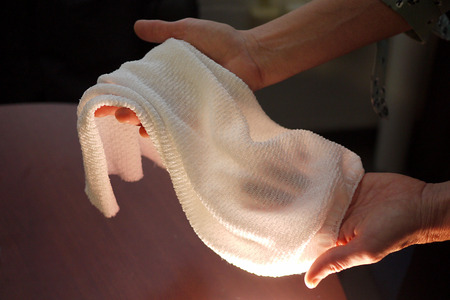
Fragrance-releasing fabric found by researchers
YarnsandFibers News Bureau 2019-08-02 15:30:00 –Researchers from the University of Minho in Portugal have modified cotton fabric to release a lemony citronella aroma upon contact with sweat, benefitting those exposed to hot summer weather or intense physical activities.
In recent years, scientists have developed smart fabrics that react to stimuli such as light, temperature or mechanical stress and respond in certain ways, such as by changing colour or conducting an electrical signal. Furthermore, researchers have also explored different methods to release fragrances from fabrics.
To explore this, Carla Silva, Artur Cavaco-Paulo and colleagues of the department of Biological Engineering at the university located in the Portuguese city of Braga wanted to develop and compare two new strategies for releasing a fragrance into clothes – ?-citronellol, a lemongrass-derived scent used in some insect repellents – from cotton fabric in response to sweat.
The teams first approach involved an odorant-binding protein (OBP) found in pigs’ noses which binds to ?-citronellol and other scent molecules. The researchers then attached a protein domain to the OBP, called carbohydrate-binding module (CBM), which binds to the cotton.
In their second strategy, the researchers packaged the fragrance in liposomes that displayed CBMs, which anchored the lipid carriers and their cargo to the fabric.
The team then exposed a modified cotton fabric to an acidic sweat solution, in which the low pH of the simulated perspiration caused the OBP and liposomes to release ?-citronellol.
When comparing the two strategies, the team found that the OBP released a quick burst of scent, whilst the liposomes showed a slower, controlled release.
Furthermore, the experiments found that the liposomes could hold more fragrance than the alternative strategy. However, the researchers concluded that the two strategies could prove useful for different clothing applications, such as in active wear or in summer clothes.
Courtesy: E & T
Market Intelligence
Ask for free sample Report

experience
Customer Base
dedicated team
Countries Served Worldwide









